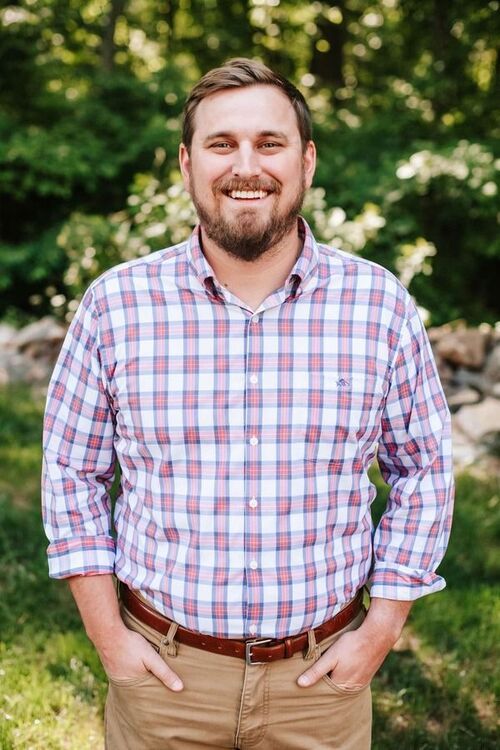Casey is a founding partner at River Run Law Group. Casey has tried numerous cases across the Commonwealth in both General District Court and Circuit Court. He has earned millions of dollars for his clients through trials, mediations, and settlements.
A multi-car accident can feel like a whirlwind. One second, you’re sitting in traffic—and the next, you’re caught between several vehicles, unsure of who hit whom and what to do next. In the chaos, you may be wondering, Whose insurance pays in a multi-car accident in Virginia? Who is at fault in a rear-end collision involving 3 cars?
The answer isn’t always straightforward. With multiple drivers, overlapping insurance policies, and Virginia’s strict fault laws, figuring out who’s financially responsible takes more than a glance at the damage.
At River Run Law, we help crash victims across Virginia make sense of these situations. In this post, we’ll explain how fault is determined in multi-vehicle accidents, who ends up paying, and what happens if you’re partially blamed.
How Do I Know If I Have Been in a Multi-Vehicle Accident?
If you were involved in a crash with more than two vehicles, you’ve likely experienced what’s known as a multi-vehicle accident. Also called multi-car accidents or chain-reaction crashes, these events involve three or more vehicles and are typically more chaotic than standard two-car collisions.
Sometimes, the cars in a multi-vehicle accident hit each other simultaneously. In other situations, the initial impact can cause a ripple effect, leading to a series of collisions involving multiple drivers. In any case, the chaos can leave you confused, scared, and overwhelmed.
What Are Common Causes of Multi-Vehicle Accidents?
A multi-car accident can happen anywhere. However, these types of collisions are especially common in high-speed or high-traffic areas. Some of their most frequent causes include:
- Sudden braking in heavy traffic,
- Failure to yield the right of way,
- Failure to abide by stop signs and other traffic signals,
- Tailgating or following too closely,
- Distracted driving (texting, adjusting controls, etc.),
- Unsafe lane changes,
- Poor road conditions,
- Impaired driving,
- Low visibility or night driving, and
- Speeding or reckless driving.
Because many variables are involved—multiple drivers, differing accounts, and complex impact points—multi-vehicle accidents often require a more thorough investigation than a typical two-car crash. Determining who was at fault, in what order the crashes occurred, and which insurance coverage applies isn’t something you want to guess at.
If you’ve been injured in a multi-vehicle accident, it’s essential to speak with an experienced attorney who can help untangle the details, protect your rights, and work to ensure you aren’t blamed for something that wasn’t your fault.
Whose Insurance Pays in a Multi-Car Accident?
After a multi-vehicle accident, several types of insurance coverage may come into play. Who pays—and how much—depends on the crash details, who was at fault, and what kind of coverage each driver carries. Some potential sources of compensation include:
- Your auto insurance policy,
- MedPay,
- Uninsured/underinsured motorist (UM/UIM) coverage, and
- The at-fault driver’s liability insurance.
You’ll often start by using your insurance coverage first, especially for immediate medical needs. MedPay can help with hospital bills and doctor visits while the broader legal process unfolds. That’s important because most people can’t afford to delay care after a serious crash while liability is still being sorted out.
In the meantime, your lawyer will begin building your case. At River Run Law, we work to gather the evidence to determine who was responsible, whether one driver or several share the blame. Once those facts are clear, we can take action to hold the at-fault parties accountable and fight to pursue the compensation you deserve.
Who Is at Fault in a Three-Car Accident?
Determining fault in a three-car accident isn’t always straightforward. Understanding how liability works in these situations is critical if you’re trying to recover damages for your injuries or property loss.
Virginia’s Contributory Negligence Rule
Virginia follows a pure contributory negligence system. If you are found to be even 1% at fault, you may be completely barred from recovering compensation. It’s a harsh rule compared to other states and makes proving fault essential in any personal injury claim.
In a three-car crash, it’s possible that one driver caused the entire chain of events. But it’s also possible that two or more drivers share fault. Insurance companies often dispute who started the chain reaction and who should be held responsible.
How Fault Is Investigated in a Multi-Car Accident
A detailed investigation is usually necessary to determine who caused the accident. Several sources of evidence may be used to piece together what happened, including:
- Police reports. Officers at the scene document their observations, interview drivers and witnesses, and may issue citations.
- Witness statements. Witnesses can provide key details that give insight into how the accident occurred.
- Traffic or dash cameras. Video footage can offer a view of how the crash unfolded.
- Photos of the accident scene. Damage patterns, skid marks, debris, and vehicle positions can help reconstruct the sequence of impacts.
- Crash reconstruction experts. These professionals analyze physics and vehicle dynamics to determine how and when each collision occurred.
Because liability in multi-car accidents often comes down to minute details, having an attorney on your side can help preserve critical evidence and protect your ability to recover compensation.
Contact River Run Law for a Free Case Evaluation
At River Run Law, we help clients across Virginia navigate the confusion of multi-vehicle accidents. Our Richmond-based team uses modern technology and embraces open communication to ensure you’re never left in the dark.
We’ll work to gather the facts, build your case, deal with the insurance companies, and fight to get you the compensation you deserve. And you’ll never pay us a cent unless we win for you. Contact us today.


